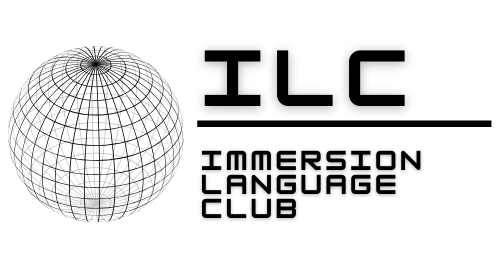In case you weren’t already aware, kanji are an integral part of the written Japanese language. They’re used extensively: in newspapers, books, manga, ads, everywhere. The Japanese Ministry of Education has established a set of guidelines to determine the appropriate level of kanji proficiency for students at different stages of their education. Here’s a brief look at these different levels of proficiency and the number of kanji you'd be expected to know at each stage of schooling were you too a Japanese native.
Elementary School (Grades 1-6)
In Japan, the education system places a great deal of emphasis on kanji education. Students begin learning kanji characters from the first grade, and by the end of their elementary education, they are expected to have learned approximately 1,000 kanji characters, as per the gakunenbetsu kanji haitōhyō (学年別漢字配当表) -- say that five times fast! -- also known as the kyōiku kanji (教育漢字). These kanji are considered the basic building blocks of the Japanese language, and I like to tell my students that kanji can’t be that bad if these elementary schoolers can get that many of them down.
The gakunenbetsu kanji haitōhyō is a list of kanji characters that are specifically designated for each grade level, from first grade to sixth grade. The list serves as a guide for teachers and students to ensure that the appropriate number of kanji characters are taught in each grade, and that students are well-prepared for the next level of education.
The first-grade list consists of 80 kanji characters, and each subsequent grade adds an additional 160 characters. By the end of the sixth grade, students have learned a total of 1,006 kanji characters, which is a significant accomplishment.
While the gakunenbetsu kanji haitōhyō serves as a guideline, it is not a rigid rule. Teachers have the flexibility to adjust their lessons to meet the needs of their students, and some may introduce additional kanji characters beyond the designated list.
Overall, the gakunenbetsu kanji haitōhyō is an essential aspect of Japan's education system. It provides a standardized approach to kanji education, ensuring that all students receive a comprehensive education in the language.
Junior High School (Grades 7-9)
For the record, these jōyo kanji are the ones you and I care about most. So be relieved: you only need to learn 2,136 characters (on top of the 92 new kana characters you learned before)! *Awkward smile and wink*
Many Japanese adults therefore continue to study kanji beyond the level required by the end of high school, as there are thousands more kanji characters that can be learned, and such individuals often find the pleasure and pain of kanji to be two sides of the same coin to that end.
The Jōyō Kanji
As mentioned earlier, the jōyō kanji, or "common use kanji," is a set of 2,136 Chinese characters officially designated for use in daily communications throughout the country. These characters were first selected by the Japanese Ministry of Education in 1981 to be taught and learned in schools, replacing the previous set of 1,850 characters known as the "tōyō kanji" (当用漢字) or "present use kanji."
At the time, the jōyō list totaled 1,945 characters. (Which is spookily also the number year that Japan underwent one of its biggest governmental and economic overhauls of all time.) The list was last updated much later in 2010 (which was only yesterday, when you think about it), when it was expanded from 1,945 to the 2,136 characters we know and love today.
The selection process for these 2000+ characters was based on several factors, including frequency of use, importance in written communication, and overall cultural significance. By learning these kanji, Japanese learners are able to read and write most of the commonly used words that show up on a regular (if not exactly everyday per se) basis.
Today, the jōyō kanji are widely used in Japanese education and serves as the foundation for the study of the Japanese language. The characters are taught in a more-or-less specific order, with students gradually building up their kanji knowledge and skills. These kanji are considered essential for basic literacy in Japanese society and are therefore taught in schools throughout the country, often serving as a requirement for entrance to higher education institutions.
The Dai Kanwa Jiten
But wait!, you say. I found on some Reddit channel way-back-when that there are far more than just 2,000-something kanji!
You're right. The Dai Kanwa Jiten (大漢和辞典), or "big Japanese kanji dictionary," is a Japanese dictionary that contains over...wait for it...50,000 kanji characters.
This massive Chinese-Japanese dictionary was compiled by Japanese scholars in the Edo period (1603-1868). The dictionary contains over (I repeat) 50,000 entries and is considered one of the most comprehensive Chinese-Japanese dictionaries ever created. This compilation took place in response to a growing need for accurate and comprehensive Chinese-Japanese dictionaries in Japan at the time, what with China still being seen as a major cultural and intellectual influence on historical Japan.
First published in 1716, the dictionary and has been revised and updated several times since then and remains an important reference work for scholars of the Chinese and Japanese languages, literature, and culture.
While it's not even remotely necessary to know all of these kanji, it may be a useful resource for those studying Japanese and for those who work with the language professionally. (See also the last sentence in the above "College and Beyond" section regarding intentional pain-seekers.)
---
To conclude, knowing the appropriate level of kanji proficiency is important to consider after gauging what our own specific needs and desires are behind learning Japanese. For most of us, the 2,136 "regular-use" kanji are more than sufficient.
And if you're interested in mastering these and other important aspects of Japanese kanji, I recommend looking no further than IJC's N5 Kanji Course. Happy studies!



